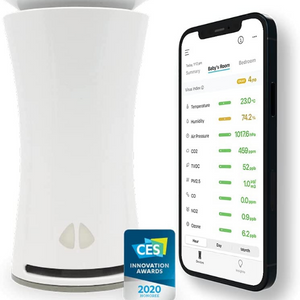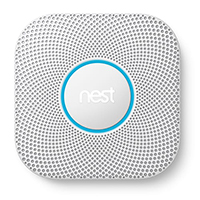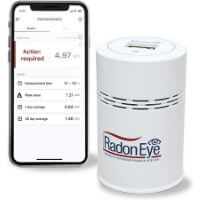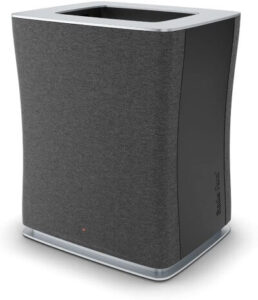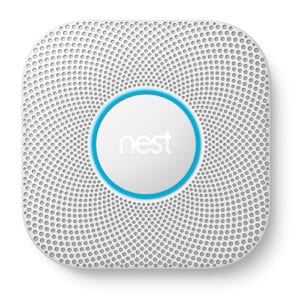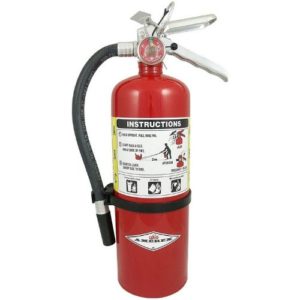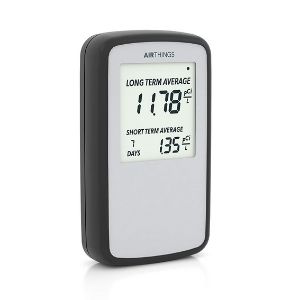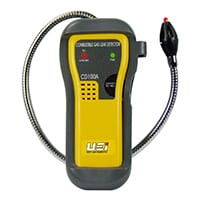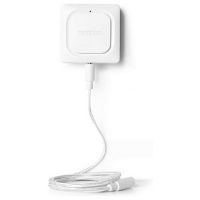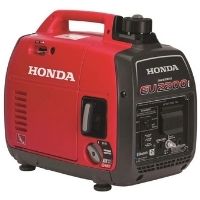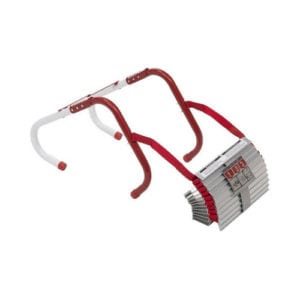If you're experiencing symptoms you suspect are related to indoor air quality, getting an air quality monitor is an inexpensive way to pinpoint the problem. By monitoring levels of indoor air pollution, you can take steps to get fresh air back into your home, and hopefully, a little peace of mind with it.
Which contaminants or pollutants should an air quality monitor measure?
Look for air quality sensors that provide the following air quality measurements.
- Humidity: Indicates potential for mold growth.
- Temperature
- VOC (Volatile Organic Compounds): These are chemical pollutants identified by the EPA as potential sources of indoor air quality problems and come from building materials, carpeting, etc.²
- Levels of particulate matter (PM 2.5): This is the level of dust mites and other allergens present in the air.
- AQI (Air Quality Index): A measurement of air quality the EPA uses to determine the risk of health problems associated with indoor and outdoor pollution.³
Some air quality monitors provide additional information like outdoor air quality and levels of carbon dioxide or carbon monoxide. However, the factors listed above are the most critical measurements for an air quality monitoring station to capture.
Check out our air quality monitor buyers guide for recommendations.
